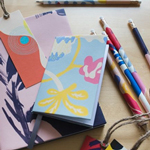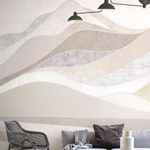
How to remove wallpaper from drywall is a common question among homeowners looking to refresh or redecorate their space. In this comprehensive guide, we'll cover various aspects of the process, including different types of wallpaper, how to safely prepare the room, five effective methods for wallpaper removal, and steps to prepare the walls for new decor after removing the wallpaper. We will also provide additional tips and address common mistakes to avoid, ensuring a smooth and successful wallpaper removal project.
Understanding wallpaper types

Before diving into the removal process, it's helpful to identify the type of wallpaper you're working with, as it may decide your removal technique. When it comes to removing wallpapers, the types encountered are strippable, peel-and-stick, vinyl-coated, and textured.
● Strippable wallpapers: This category includes non-woven versions and is designed for easy removal, often peeling off in large strips.
● Peel-and-stick wallpapers: This type of wallpaper offers a straightforward application and removal process, perfect for those who want to update their space’s look frequently.
● Vinyl-coated wallpapers: These are designed to withstand moisture and scrubbing, making them harder to remove than other types.
● Textured or embossed wallpapers: Apart from traditional wallpapers, some wallpapers are specifically designed with raised patterns for a textured feel. They often require more aggressive techniques due to their surface structure, which can make removal more challenging
Room preparation and safety precautions

Now that you’ve identified your wallpaper type— it’s time to prepare for a safe, smooth, and efficient process:
● Room preparation: Clear the room as much as possible to create ample working space and prevent damage to furniture. Cover remaining furniture and flooring with plastic sheeting or tarps to protect them from potential drips of the cleaning solution.
● Personal safety measures: To ensure safety during wallpaper removal, wear protective gloves to safeguard against skin irritation. Use safety goggles to protect your eyes from debris and chemicals. If you're sensitive to dust, wear a mask. Ensure good ventilation to avoid inhaling harmful fumes
● Ensuring electrical safety: Ensure electrical safety during wallpaper removal by covering outlets and switches with waterproof tape. Consider turning off the electricity supply to your work area for added safety.
Five techniques for wallpaper removal
This section will cover five techniques for wallpaper removal suitable for different types of wallpaper, such as the ones we discussed earlier. Know the tools, steps, and tips relevant to each technique.

Technique 1: Peeling
Suitable for: Strippable (including non-woven) and peel-and-stick wallpapers
Peeling is the simplest yet effective technique designed for wallpapers that can be easily removed, which are the types that Photowall offers— non-woven and peel-and-stick wallpapers.
Tools
● Plastic scraper
● Warm, soapy water
● Sponge or soft cloth
Step-by-step guide
1. Loosen the edge of the wallpaper with the plastic scraper.
2. Once an edge is loose, peel the wallpaper off. It should come away easily.
3. Clean the wall with warm, soapy water using a sponge or soft cloth if any adhesive residue remains.
Tip: Be gentle with the scraper to avoid damaging the drywall underneath.
Technique 2: Homemade solutions

Suitable for: Traditional, vinyl-coated, and textured wallpapers
This approach, which avoids the need for harsh chemicals or heat, is particularly suited for moderately stubborn wallpapers, including traditional, vinyl-coated, and textured types. The fabric softener mixture is especially handy for textured wallpapers, as it can seep into crevices for more efficient removal.
Tools
● Bucket of warm water
● Sponge or soft cloth
● Plastic scraper or putty knife
● Fabric softener
Step-by-step guide
1. Mix equal parts fabric softener and warm water in a bucket if dealing with moderately stubborn or textured wallpapers. For less stubborn wallpapers, plain warm water should suffice.
2. Saturate the wallpaper with your chosen solution using a sponge or soft cloth. Let the water or solution soak in for a few minutes (up to 20 minutes for the fabric softener mixture) to soften the wallpaper and its adhesive.
3. Use a plastic scraper or putty knife to peel off the wallpaper carefully.
4. Wipe the wall with warm water to remove any remaining adhesive.
Tip: If the wallpaper isn't soaking up the solution well, try scoring the surface lightly before applying the solution.
Technique 3: Chemical wallpaper remover

Suitable for: Traditional and vinyl-coated wallpapers
When dealing with stubborn wallpapers, resorting to a chemical wallpaper remover might be necessary. This potent solution is designed to dissolve tough adhesive bonds, facilitating removal. Always adhere to safety instructions when using chemical products.
Tools
● Chemical wallpaper remover
● Sponge or soft cloth
● Plastic scraper or putty knife
Step-by-step guide
1. Use a sponge or soft cloth to apply the wallpaper remover to the wall, following the manufacturer's instructions.
2. Allow the remover to sit for the recommended time to penetrate and soften the adhesive.
3. Use a plastic scraper or putty knife to peel off the wallpaper.
4. Clean the wall according to the remover's instructions to eliminate any leftover adhesive.
Tip: Use chemical removers in a well-ventilated area and consider wearing protective clothing and eye protection.
Technique 4: Wallpaper steamer

Suitable for: Vinyl-coated, textured, and traditional wallpapers
Steamers are an excellent tool for removing wallpapers that have deep-set adhesive. The heat from the steamer allows the adhesive to soften, enabling the wallpaper to be peeled off more comfortably.
Tools
● Wallpaper steamer
● Plastic scraper or putty knife
Step-by-step guide
1. Follow the manufacturer's instructions to prepare and use the wallpaper steamer.
2. Use the steamer on one section of the wall at a time, then immediately scrape off the wallpaper with a plastic scraper or putty knife while the adhesive is still soft.
3. Repeat the process until all wallpaper is removed.
4. Wipe the wall with warm water to remove any remaining adhesive.
Tip: Be patient and allow the steamer to do its work. Do not force the wallpaper off; it could damage the drywall.
Technique 5: Scoring and soaking

Suitable for: Textured or embossed wallpapers
This method involves creating tiny punctures in the wallpaper's surface to help your removal solution penetrate the material and reach the adhesive. It's particularly effective for wallpapers where the raised design might otherwise prevent your solution from soaking in evenly.
Tools
● Scoring tool (or wallpaper perforator)
● Bucket of warm water
● Fabric softener or wallpaper removal solution
● Sponge or soft cloth
● Plastic scraper or putty knife
Step-by-step guide
1. Use a scoring tool to create small punctures in the wallpaper surface without damaging the wall underneath. This helps the removal solution penetrate the wallpaper.
2. Mix equal parts of the fabric softener and warm water in a bucket (or prepare your wallpaper removal solution according to the manufacturer's instructions).
3. Soak the wallpaper with a sponge or soft cloth. Allow it to sit for 20 minutes to soften the wallpaper and adhesive.
4. Use a plastic scraper or putty knife to peel off the wallpaper carefully.
5. Wipe the wall with warm water to remove any remaining adhesive.
Tip: Test a small hidden area first to ensure the scoring doesn't damage the drywall and ensure the punctures are even to allow the solution to penetrate properly.
How to prepare drywall after wallpaper removal for a new décor
Preparing walls for fresh decoration after removing wallpaper is crucial in achieving a flawless finish. To ensure that your walls are clean, sound, smooth, and ready for new décor, this section will cover two main sections: (1) the specific process of repairing drywall imperfections and (2) the general preparations needed for redecoration.
Repairing drywall imperfections

Drywall can be a delicate surface to work with, and unexpected mishaps like dents, scratches, or cracks can occur, especially during the wallpaper removal process. Whether from an accidental slip with a scraper or an over-enthusiastic pull on the wallpaper, these imperfections should be addressed before proceeding with new wallpaper or paint because leaving these untreated could compromise the integrity of the new wall décor. Here are the tools and steps:
Tools
● Putty knife or scraper
● Spackle or joint compound
● 120-grit sandpaper
Steps
1. Assessing the damage: Identify damaged areas like dents, cracks, or holes that need repair.
2. Utilizing suitable filling materials: Choose the right filler, such as a spackle or joint compound, and apply it with a putty knife or scraper to fill the imperfections. Allow it to dry as instructed.
3. Sanding: Sand the filled areas using 120-grit sandpaper to blend them with the rest of the wall, ensuring a smooth and even surface for new décor.
General preparations
After repairing some drywall imperfections, you're now ready to prepare your walls for a fresh room makeover. Here are the general preparations needed for redecoration:
● Cleaning off remaining adhesive: The leftover adhesive may still be present after wallpaper removal. Use warm water and gentle tools like sponges to dissolve and clear the remaining glue. The most complete information on removing wallpaper glue is available here: How to remove wallpaper glue
● Ensuring walls are completely dry: Moisture can cause problems like mold or adhesion issues. After cleaning, allow at least a full day for drying. Check the walls for damp areas to ensure they are dry, setting the stage for proper adhesion of new wall decor.
● Removing dust and debris: Before applying new decor, remove any dust and debris that might hinder the application. Vacuum the walls with a soft brush attachment, then wipe them with a damp cloth. Allow them to dry for a clean, ready-to-decorate surface.
Final tips for easier wallpaper removal in the future
Proper planning can make wallpaper removal less of a chore in the future. One essential strategy to consider is choosing the right type of wallpaper. It's best to select options like peel-and-stick and non-woven wallpapers; they are the easiest to remove among all wallpaper types. Photowall offers a broad range of these types of wallpapers, providing not just style and quality but also a future-friendly decorating choice.

Another key point to consider is the proper priming of your walls. Creating a barrier between the wall and the wallpaper makes future removal easier. A good primer can prevent the wallpaper from bonding too firmly to the wall, allowing for smoother removal without causing excessive damage or requiring extensive effort.
Common mistakes when removing wallpaper

Despite the comprehensive guidance provided in this guide, it is common to stumble upon a few hitches during the wallpaper removal process. Here are some of the frequent mistakes that individuals commit while removing wallpaper and how to avoid them:
● Forcing the wallpaper off the wall: This may damage the drywall or leave behind stubborn adhesive residues. Always allow sufficient time for the removal solution or steam to penetrate and soften the wallpaper and adhesive before starting to scrape.
● Using sharp and abrasive tools: These tools can cause unintentional damage to drywalls, resulting in scratches or gouges. This can lead to extra work and expensive repairs. Instead, choose safer options like scrapers or putty knives with smooth edges. These tools will effectively remove the wallpaper without compromising the integrity of your wall surfaces.
● Not testing the wallpaper type: Failure to identify the type of wallpaper before starting removal can cause unnecessary difficulties. Different wallpapers respond to different removal techniques. Conduct a small test in an inconspicuous area to identify the best removal method for your wallpaper.
By considering all these aspects, you can truly embrace the transformative power of wallpaper while making interior decorating simpler when it's time for a change. And when you're ready to install new wallpaper, be sure to check out our complete resource on wallpaper installation: How to install wallpaper
 Australia
Australia
 Austria
Austria
 Belgium (Dutch)
Belgium (Dutch)
 Canada (English)
Canada (English)
 Denmark
Denmark
 Estonia
Estonia
 Finland
Finland
 France
France
 Germany
Germany
 Ireland
Ireland
 Italy
Italy
 Japan
Japan
 Luxembourg (French)
Luxembourg (French)
 Netherlands
Netherlands
 New Zealand
New Zealand
 Norway
Norway
 Poland
Poland
 Portugal
Portugal
 Romania
Romania
 Singapore
Singapore
 Spain
Spain
 Sweden
Sweden
 Switzerland (French)
Switzerland (French)
 USA
USA
 United Kingdom
United Kingdom
 Other Countries
Other Countries




